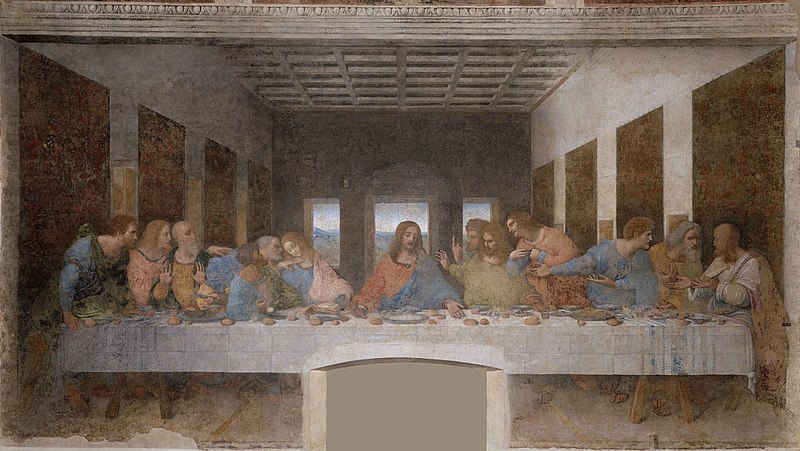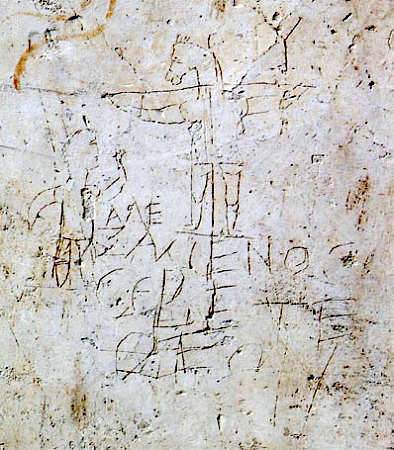
Raphael’s Transfiguration is considered to be one of the most complex paintings to come out of the Renaissance period. Shortly after its completion it was named to be Raphael’s masterpiece and was considered to be the world’s greatest painting for many generations or artists and connoisseurs.
The Transfiguration dates back to 1516 or early 1517 when the Cardinal Guilio de' Medici, the future Clement VII, commissioned it as an altarpiece for the seat of his new bishopric, the cathedral of St-Juste in Narbonne. However, he put Raphael under pressure by pinning him up against Sebastiano del Piombo, the protégé of Michelangelo, Raphael’s rival, who was creating a companion piece called The Raising of Lazarus. Despite the pressure Raphael managed to create the complex and beautiful Transfiguration, which was ultimately deemed too good for the Narbonne (Kleinhub: 370).
The painting itself depicts two Gospel episodes. The upper half of the painting shows the transfiguration itself on top of Mount Tabor which is depicted in Matthew 17:1-9, Mark 9:1-8, and Luke 9:28-36. Raphael depicts Jesus as elevated and disproportionately larger than the other figures. Moses and Elias, the prophets, are floating alongside Jesus while Peter, James and John are cowering on the mountaintop and shielding their faces. Jesus is looking upwards which suggests that there is something greater than him which he is looking to. On the left there are two men kneeling and looking on the scene. These are said to be Justus and Pastor, martyred patron saints of Narbonne.
The lower half of the painting is said to be a depiction of the episode of the nine apostles, who did not climb Mount Tabor with Jesus, who could not heal a possessed boy. This episode is described in Matthew 17:14-21, Mark 9:14-29 and Luke 9:37-45. When Jesus descends from the Mountain he heals the boy and when the apostles ask why they could not heal them, he tells them it is because they have little faith. This message seems to be what connects the upper half of the image and the lower half of the image.
Even though the two scenes share the same setting in the Gospels, they are depicted by Raphael as being entirely separate entities, but in one image. None of the individuals in the lower half of the image acknowledge the figures above and none of the figures above acknowledge the images below. Many were confused why Raphael would choose to depict these two scenes in this way. But Johann Wolfgang von Goethe felt that the two halves were meant to be complementary (Kleinhub: 372). The upper half is supposed to be the “invisible” and active power that succeeds us all, while the lower half was meant to show the suffering that occurs in the human world, what is “visible.” After Goethe, most other scholars also interpreted the image in this way.
The shadow that runs through the image is believed to be the key factor in Transfiguration. It separates Jesus, the two prophets and the three apostles from the scene of the demonic boy and the apostles below. Nobody in the bottom half of the image seems to be able to see, or even acknowledges the upper half of the image. The only connection between the two is made by the apostle in the lower left hand side in the red cloak (Kleinhub: 374). He has his eyes shut, his hand across his chest and he is pointing through the shadowy barrier towards Jesus. This symbolizes access to the “invisible” and to Jesus. This gesture also symbolizes that a connection can only be made to God through internal beliefs and visions. This is where the message of having little faith connects the two halves. The apostles that surround the apostle in the red cloak also seem to show signs of inward connections to the upper half of the image. The blond apostle standing next to the apostle in the red cloak is indicating to the woman on the other side of the image that the visions come from the heart, not from the eyes. This demonstrates that faith comes from within and cannot be found in the physical, external world.
The figures on the left hand side of the image seem to be amazed and at peace, while their counterparts on the right hand of the image seem furiously wild and upset. This opposition is demonstrated by another shadow that divides the groups. The figures on the right are believed to depict the external vision of the world and have little faith. They do not understand looking to Jesus from within themselves and they are looking to external, physical sources to help them draw the demon from the child. But there are exceptions on both sides of the lower half. Some of the apostles on the left are showing signs of external faith, while some on the right are showing signs of internal understanding.
The boy himself seems to symbolize the dichotomy between the upper and lower images. His right arm is being pulled upwards while his lower arm seems to be pulled downwards. This is believed to be an indication that the boy is suffering from more than internal pain and that he also displays an inner turmoil (Kleinhub: 378).
Raphael’s Transfiguration is an extremely complex and though provoking piece. At first glance, one might not understand what Raphael was trying to say. But after further evaluation the pieces of the work come together to form a beautiful and incredibly deep piece of artistic genius.
By: Elizabeth Jensen
Sources:
"Raphaels Transfiguration as Visio-Devotional Program" by Christian K. Kleinbub
ARTStor










